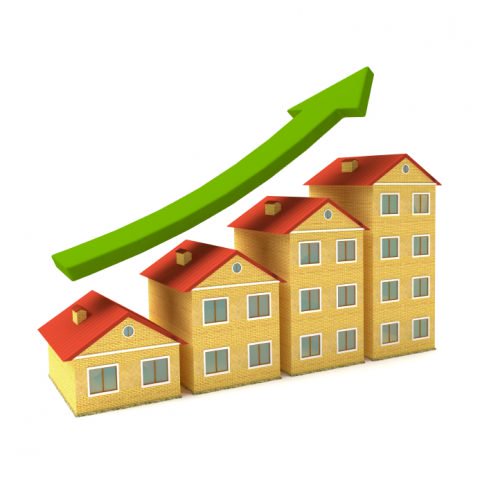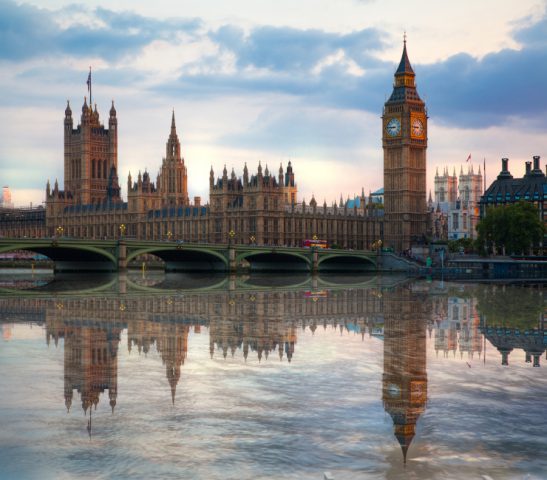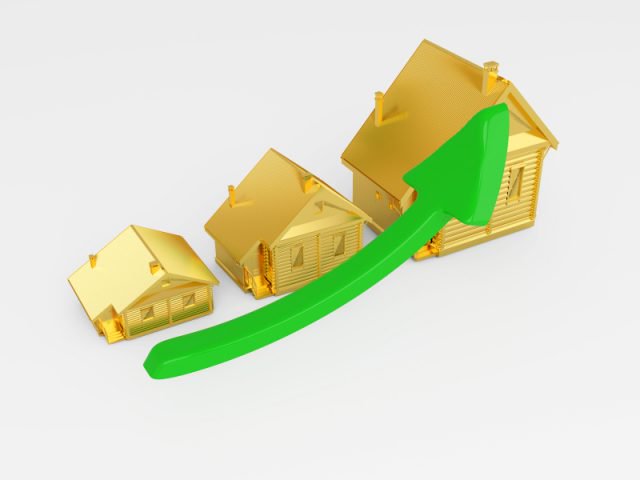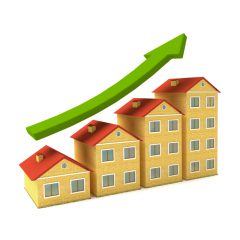Annual house price growth in 6 month high
Annual house price growth in England and Wales rose at its quickest rate for 6 months during October, according to a new property index.
Data from the Your Move Reeds Rains Index indicates that property prices rose by 5.2% in comparison to the same period last year. In addition, average property prices increased by 0.9% month on month, bringing the typical property value to £288,421.
Rises
This record high rise was the tenth consecutive one recorded this year. The overall price growth is being driven by property in the capital, with values increasing by £24,636 here in the previous year. If London and the South East of England were taken out of consideration, annual house price growth would slow to 3.9%.
For sales, last October was the strongest since 2007, with the north seeing the largest sales boost, due to better levels of supply. However, sales of homes valued at £1.5m or more dropped by 35% year on year, with changes in Stamp Duty still hitting hard.
East Anglia recorded the strongest year on year growth of any region, with rises of 6.2% taking the average price of property in the region to £241,284.
Recovery
The report shows that London house prices are recovering from more slowed growth seen in the second half of 2014. In the capital, there has been an annual rise in prices of 4.4%. Most of these recent price rises have been driven by growth in areas such as Harrow Newham and Barking and Dagenham.
‘These rapid rises are currently outweighing the decline at the top of the market, carrying average values higher,’ noted Richard Sexton, director of e.surv chartered surveyors. ‘While many commentators are forecasting significant house price growth in London and the UK in the coming years, these need to be viewed in historical context and we’re unlikely to see a return to the unsustainable rise of the past decade.’[1]
‘Most current predictions are still a slowdown from the past five years of growth and overall since September 2005 average prices across the country have soared 43.5%, while average property values in London have more than doubled,’ he added.[1]
High-value drop
Mr Sexton also explained that properties worth in excess of £1.5m have been hit with the 12% of property value Stamp Duty increase, from its previously low 5%. As a result, ‘sales of homes worth more than £1.5m have fallen by 35% in the third quarter compared to a year ago,’ says Sexton. He went on to say that, ‘this tax has really put the shackles on the prime market in the capital, as three quarters of these sales since January 2014 took place in London.’[1]
‘The implications can be seen in the 12.6% annual drop in prices in Kensington and Chelsea, while prices in the City of Westminster have also fallen, 5.5% year on year. Stamp duty has had strong implications for the South East too, with prices dropping in other typically more expensive areas, such as Windsor and Maidenhead,’ he also noted.[1]
Regional results
Regionally, the pattern of property sales is in reverse to what has been happening with house prices. Activity increased most in the North, Yorkshire and Humber and the North West, but fell in the South.
Sexton notes that, ‘supply of properties on the market seems to be the sticking point for sales growth and activity in the northern most regions of England is also being facilitated by more affordable prices.’[1]
‘With low interest rates now likely to be prolonged into 2017, there should be plenty of momentum to encourage further activity. But so far in 2015, total sales are still 4% down on last year, due to a slower first six months. We will need the current revival to storm through the remaining two months of the year, if we are going to match 2014 sales,’ he concluded.[1]
[1] http://www.propertywire.com/news/europe/england-wales-house-prices-2015111211196.html






